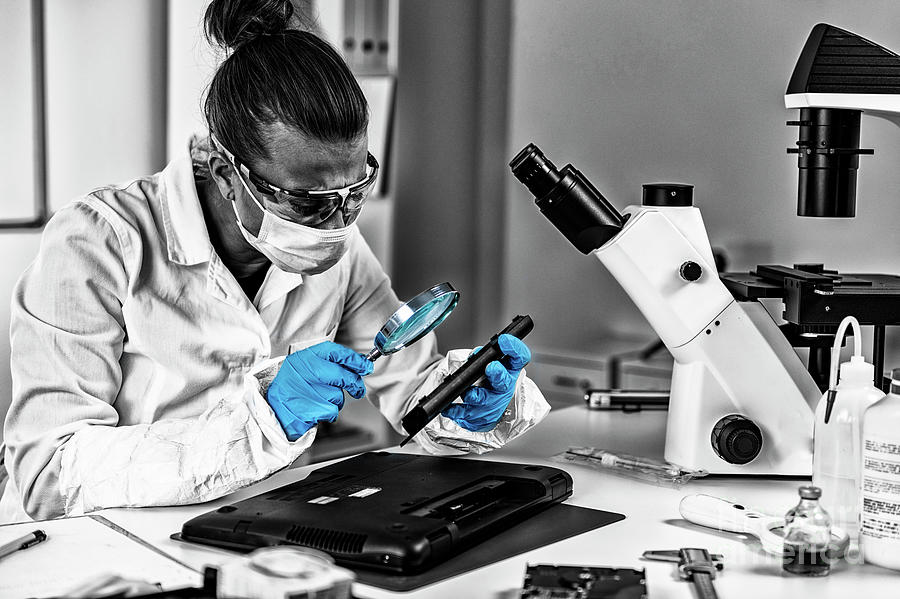DIGITAL FORENSICS PROCEDURES AND PHASES
DIGITAL FORENSICS PROCEDURES
The process of gathering, examining, and archiving electronic data so that it can be used as evidence in court is known as digital forensics. The procedures in digital forensics are as follows:
- Identification: Finding the digital device or storage medium that has to be examined is the first step in digital forensics. Any electronic device that stores data qualifies, including computers, mobile phones, USB drives, and other similar gadgets.
- Preservation: Following the identification of the digital device or storage medium, the data must be kept in its original format. In order to make sure that the original data is not changed in any way during the analysis process, this entails creating a bit-by-bit copy of the data, sometimes referred to as a forensic image.
- Analysis: Following the preservation of the data, the following step is to examine it to find any evidence that might be pertinent to an investigation. This involves using specialized software and techniques to search for and recover deleted or hidden files, analyze internet browsing history, and examine any other digital evidence that may be relevant to the case.
- Documentation: As the investigation moves forward, it's critical to thoroughly and logically record the steps taken and conclusions reached. Documenting the actions performed during the analytical process, any difficulties encountered, and any discoveries or evidence that was made are all included in this.
- Presentation: Presenting the results and evidence in a way that is acceptable in court is the last step in digital forensics. This entails writing a thorough report that summarizes the study's conclusions and presenting the facts in a way that a judge or jury may easily understand.
Digital forensics' overall objective is to find digital evidence that can be used to prove or disprove a legal claim. The measures taken during the investigation are intended to make sure that the evidence is admissible in court and can be utilized to strengthen either the prosecution's case or the defense.
Image Source: Digital Forensic Investigator At Work Photograph by Microgen Images/science Photo Library - Fine Art America
PHASES DIGITAL FORENSICS
Phase 1 - First Response
The action performed right after the occurrence of a security incident is known as the first response. It is highly dependent on the nature of the incident.
Phase 2 - Search and Seizure
During this phase, the professionals search for the devices involved in carrying out the crime. These devices are then carefully seized to extract information from them.
Phase 3 - Collect the Evidence
After the search and seizure phase, professionals use the acquired devices to collect data. They have well-defined forensic methods for evidence handling.
Phase 4 - Secure the Evidence
The forensic staff should have access to a safe environment where they can secure the evidence. They determine if the collected data is accurate, authentic, and accessible.
Phase 5 - Data Acquisition
Retrieving Electronically Stored Information (ESI) from alleged digital assets is the process of data collection. It helps to get insights into the occurrence whereas an unsuitable approach can affect the data, thus, jeopardizing the integrity of evidence.
Phase 6 - Data Analysis
Data analysis involves accountable personnel searching the collected data for information that can be used as evidence in court. Examining, recognizing, classifying, isolating, and modeling data are all steps in this phase that turn it from raw data into usable information.
Phase 7 - Evidence Assessment
The evaluation of the evidence establishes a connection between the evidence and the security incident. Based on the extent of the case, a detailed examination should be made.
Phase 8 - Documentation and Reporting
This post-investigation process includes summarizing and recording all findings. Additionally, the report must contain sufficient and respectable evidence as determined by the legal system.
Phase 9 - Testify as an Expert Witness
Forensic investigators should approach the expert witness to affirm the accuracy of the evidence. An expert witness is a specialist who looks into a crime to find proof.

Comments
Post a Comment